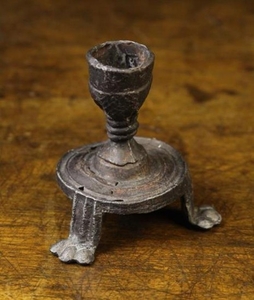He disapproved of the materialism of the Industrial Revolution, he designed according to "Christian principles," which to him meant medieval. He explained this in his 1836 book Contrasts, or, A Parallel Between the Noble Edifices of the 14th and 15th Centuries and Similar Buildings of the Present Day, Shewing the Present Decay of Taste.
He brought his "Gothic Revival" style to things other than buildings, and the pictures offer two examples of a chair and a table designed by him and inspired by what he might have called the "medieval aesthetic." I personally find his furniture and accessories odd. The holes in the chair don't match in my (admittedly limited) memory any design motif from the Middle Ages. The side table is even more odd. The quatrefoils hanging down—when they would have normally been oriented upward—seems to be adding architectural motifs into places where they don't quite fit in. Years ago, while visiting the Victoria and Albert Museum, I saw a Gothic Revival chair where the gothic pointed arch that enabled the larger windows of Gothic cathedrals was carved into the wood upside down.
As a fan of the European Middle Ages, I am glad that the 19th century saw value in the art and architecture of that earlier era. I think it possible that, at times, they went too far. (But perhaps that's just me.) An article in Architectural Review on the occasion of the bicentennial of his birth can tell you more.
I think it is better for me to stay focused on his architectural work, such as his castle. His Alton Castle had a long history before Pugin came along to rebuild it, which we'll look at tomorrow.















